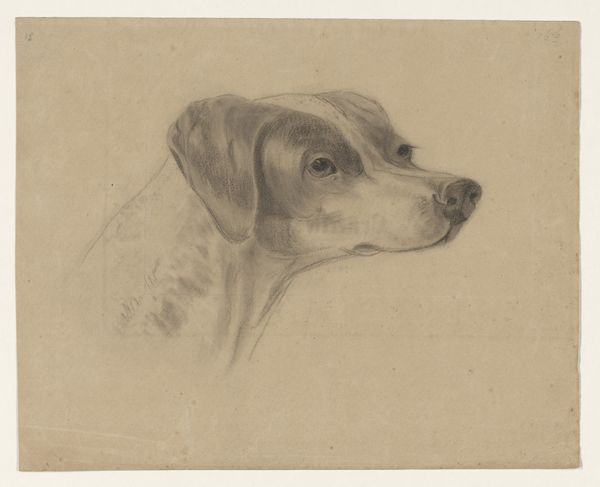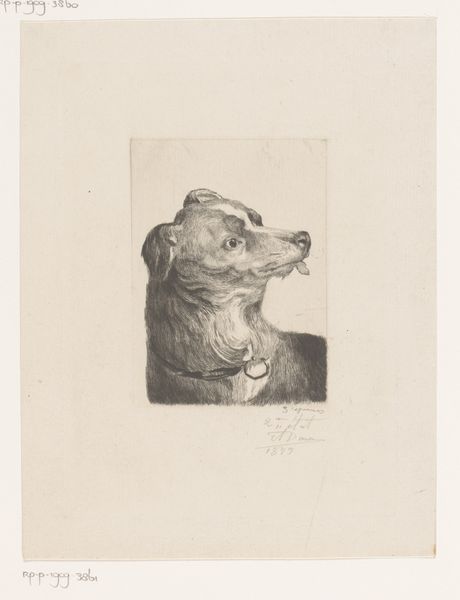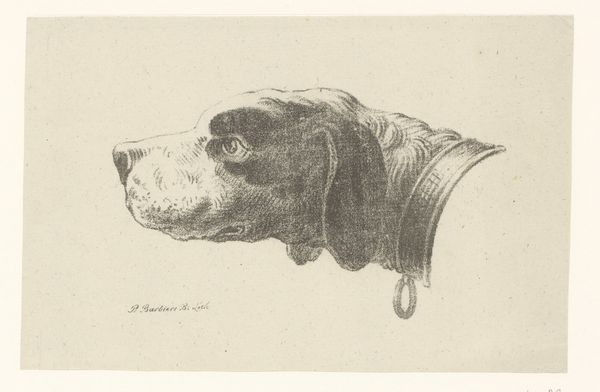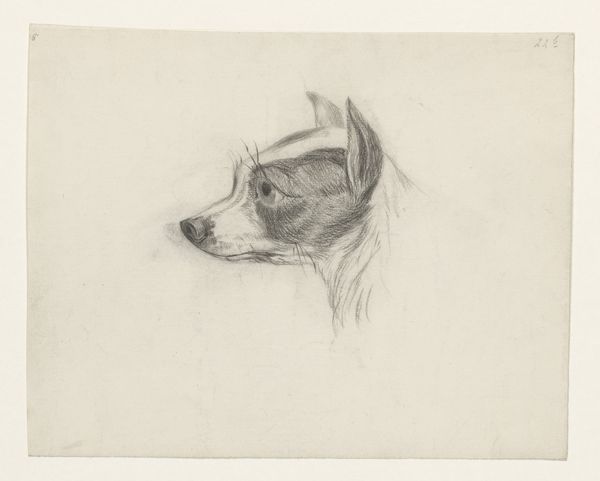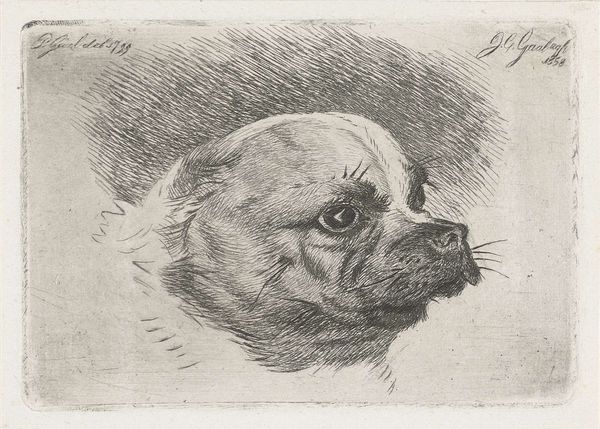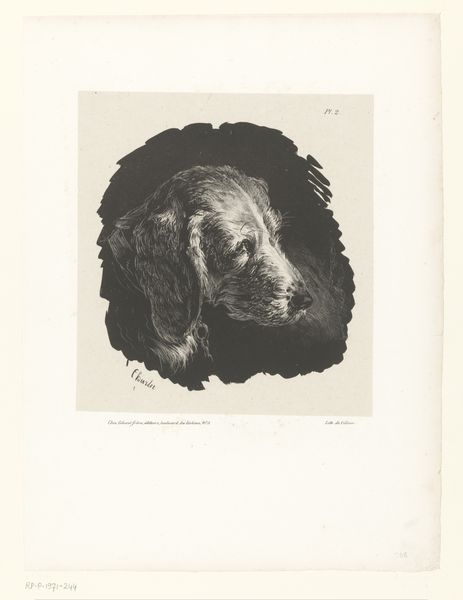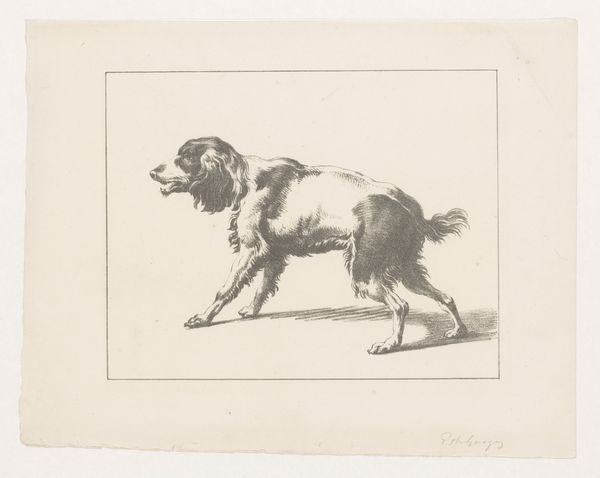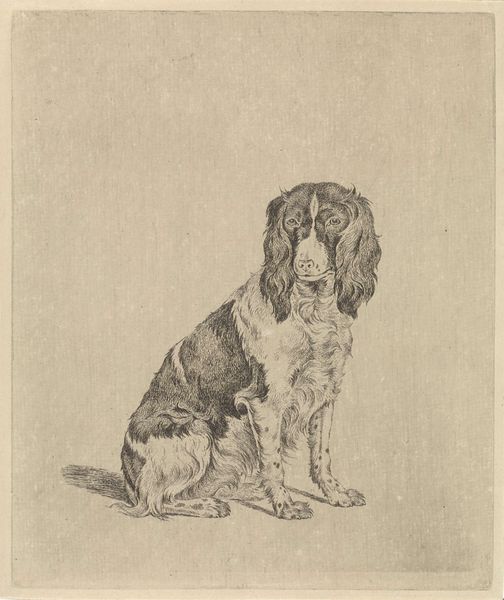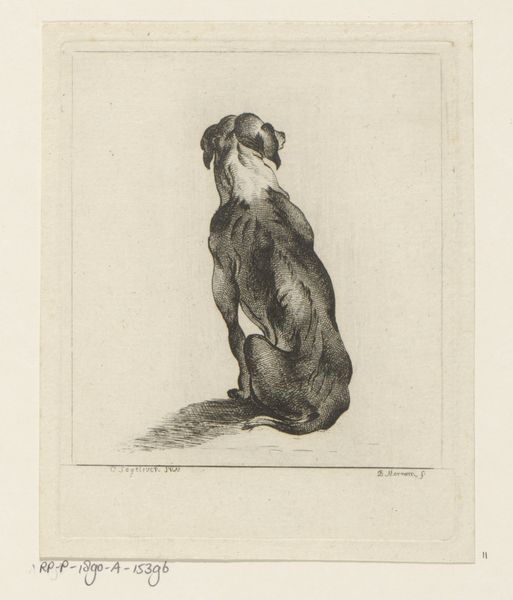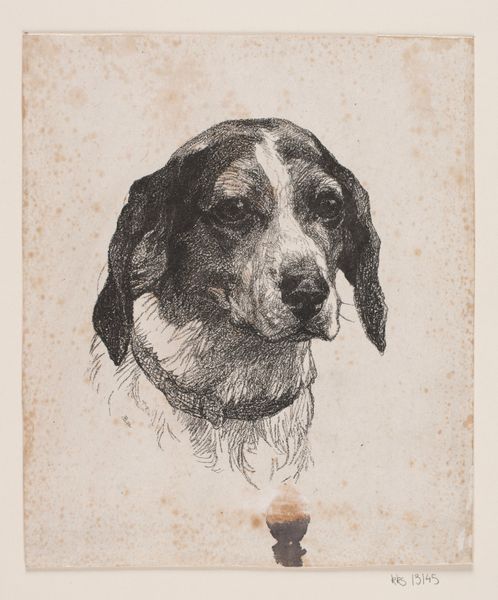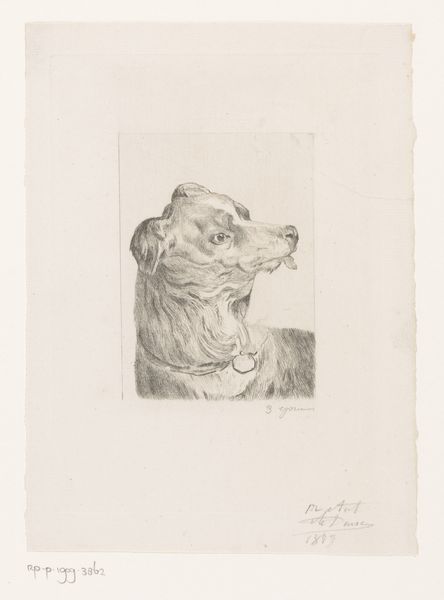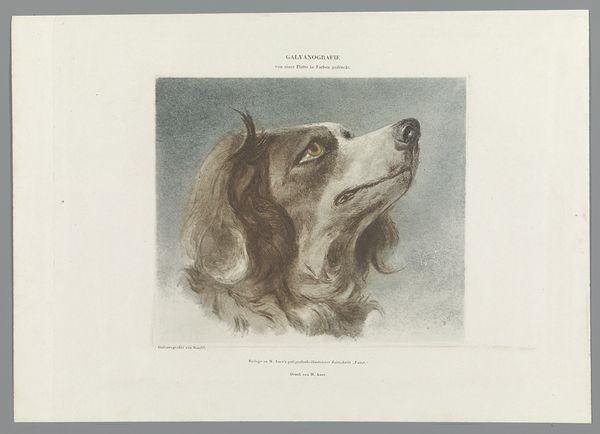
drawing, pencil
#
portrait
#
drawing
#
pencil
#
realism
Dimensions: height 205 mm, width 242 mm, height 128 mm, width 147 mm
Copyright: Rijks Museum: Open Domain
Editor: This is Pieter Barbiers' "Hondenkop," a pencil drawing from the early 19th century, located in the Rijksmuseum. There’s a somber feel to it, a stark realism emphasized by the pencil medium. What strikes you when you look at this drawing? Curator: The immediacy of the pencil drawing is important. The medium suggests a kind of accessibility. Pencil, a readily available tool, democratizes art-making. Barbiers' choice speaks to a specific type of labor, a sketching process far removed from the grand oil paintings of the era, yet serving a market, producing studies perhaps for prints. Who was buying these, and how did they use them? Editor: So you see the medium as reflective of broader accessibility, rather than simply artistic choice? Curator: Precisely! Think about the paper, too. Its quality, its source, its cost, tells us much about the intended audience and the broader system of production that supported Barbiers. Where was it made, how much did it cost? Consider how the accessibility of materials allows an artist to produce work for an expanding market, potentially reaching a middle-class audience interested in depictions of their beloved companions, dogs in this case. Editor: That's a fascinating perspective! I was focused on the artistry, but considering the economics and materials really broadens my understanding. Curator: The realism itself becomes a commodity. How do you represent something faithfully? What are the ethics behind producing objects for consumption? These are core materialist concerns. The artist and their place within the art market of the 19th century becomes clearer. What happens to drawing once photography comes around? Editor: It certainly gives me a lot to think about! Looking at art this way reveals a hidden layer of socio-economic context. Curator: Absolutely! It challenges the romantic idea of the artist as solely inspired by beauty and genius, forcing us to consider the labor and the market forces that shaped even seemingly simple drawings.
Comments
No comments
Be the first to comment and join the conversation on the ultimate creative platform.
